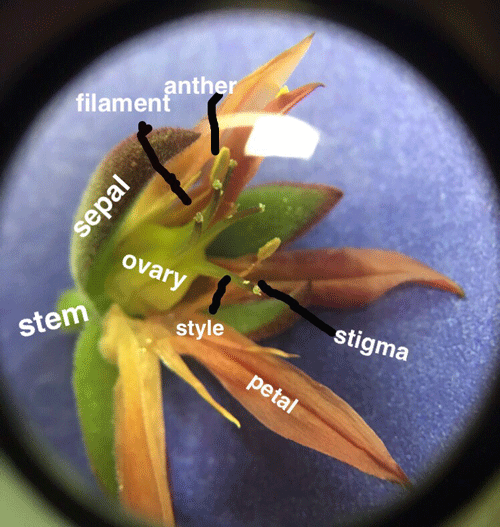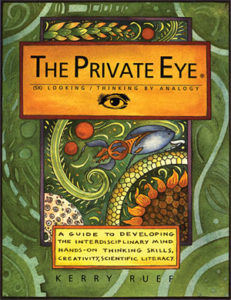 by Liz Inman
by Liz Inman
I first discovered The Private Eye Loupes when I borrowed a class set from a professor friend at the University of Kentucky. I fell in love with them and so did my biology students!
Here are some tips I discovered while using the loupes.
1.
The Private Eye loupes are a great way to introduce students to magnification, scale, and even to observation principles that can lead to artistic studies. My students were able to make connections between what they were learning not only in their science classes but also drawing principles learned in art classes.
2.
 The Private Eye was a non-intimidating way to start my biology course. Sometimes students are apprehensive heading into an upper level science course, but observing with the loupes and creating an artistic representation, both using drawing and poetry, gave students a positive and relaxing way to enter the course.
The Private Eye was a non-intimidating way to start my biology course. Sometimes students are apprehensive heading into an upper level science course, but observing with the loupes and creating an artistic representation, both using drawing and poetry, gave students a positive and relaxing way to enter the course.
3.
As I begin to recraft my lessons to better incorporate the Crosscutting Concepts of the Next Generation Science Standards, I plan to include use of The Private Eye loupes as an introduction to Scale, Proportion, and Quantity.
4.
I would love to see if I could model all of the Crosscutting Concepts of the Next Generation Science Standards using The Private Eye loupes! Having students see principles modeled in an almost hidden “world” makes everyone detectives who can discover exciting things!
5.
As a former art major, and now biology teacher, I love how The Private Eye loupes allow me to merge these two interests and show students how taking the time to slowly observe and diagram a living thing can not only add to their knowledge of the organism, but also to translating their observations into something that is an expression of themselves.
6.
Using The Private Eye Book with my biology classes has led to thought-provoking conversations with teachers of other subject matters in my school. From talking to the art teacher about shading and drawing technique to discussing translation of haikus into different languages with an English teacher, the loupes and process can help cross the traditional boundaries of disciplines.
 7.
7.
The use of The Private Eye was a natural way to begin my ELL biology class, as observation skills are universal. The analogy portion of the observation was especially enlightening as students had to push themselves to not only understand what an analogy is, but also to work to translate their analogies into a new language. This activity helped me get to know my students and see the world from a different point of view through our loupe discussions and translations.
Note: the image above is a loupe-view taken with a smart phone.
Liz Inman teaches Biology, Honors Biology, and IB HL Biology at Tates Creek High School in Lexington, Kentucky. This blog originally appeared in The Private Eye‘s newsletter.

